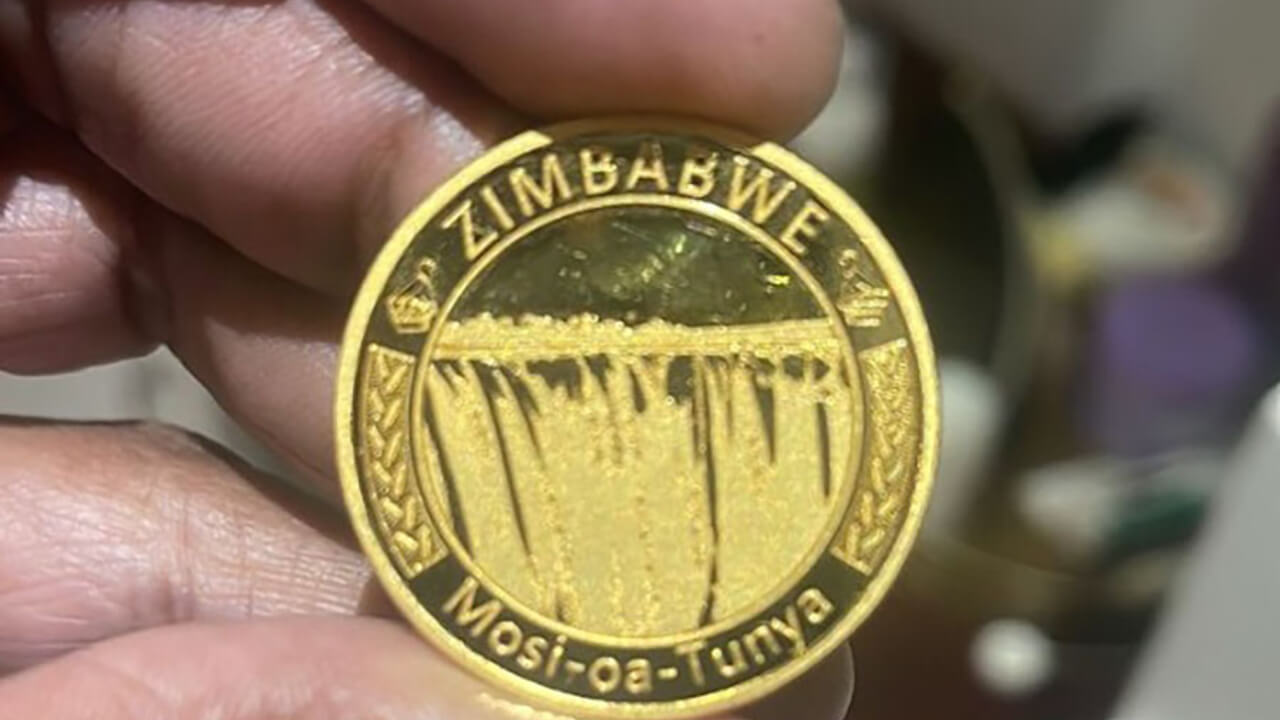Will smaller gold coins further anchor stability?
There are many questions being asked about the gold coins, especially the smaller coins introduced into the market on Tuesday last week. But the main question is – Are these smaller gold coins going to further anchor the stability? How about the high denominations that were first introduced into the market, have they saved their purpose?
But according to Reserve Bank of Zimbabwe (RBZ) Governor Dr John Mangudya, he has a different school of thought. He believes the exchange rate is further expected to stabilise following the introduction of small gold coins.
Dr Mangudya noted that the large denomination bullion coins worth US$12 billion had been sold over the past four months.
The small gold coins, open to both corporates and individuals, were unveiled on Tuesday, four months after the bullion coins, also known as Mosi-O-Tunya coins debuted on the market.
The gold coins provide an alternative investment option for individuals and corporates holding excess liquidity.
They have been partly credited for mopping up excess liquidity in the market and stabilising the exchange rate and inflation. The suspension of payments to government contractors and high-interest rates to curb speculative borrowing have also helped to bring stability to the economy.
The gold coins have reduced demand for the US dollar, the currency mostly preferred for value preservation and presented a relatively safe haven for investors.
Gold coins have traditionally been a good hedge during inflationary periods. Even global investors look at gold as a haven during times of political and economic uncertainty.
At the time the gold coins were introduced on July 24, 2022 the monthly inflation rate was 16,1 percent and has since eased to 3,2 percent for the month of October 2022.
Similarly, the parallel markets exchange rate has stabilised at around $850-$850 for US$1 and nearing convergence with the official exchange rates (interbank and auction rates).
In an interview this week, Dr Mangudya said the uptake of gold coins was encouraging.
“Gold coins are real money,” said Dr Mangudya. “It is a good substitute for foreign currency; we are using gold coins as an instrument to ensure that it provides the market with what (it) needs while at the same time it also mops (out) money from the economy…as the sterilisation instrument (and) by so doing, we are killing two birds with one stone, one had it will provide an alternative investment product while at the same time, it mops excess money from the market,” Dr Mangudya added.
The central bank governor said the exchange rate could have gone spiral if it had not introduced the gold coins. Even if the RBZ decided to issue a Zimbabwe dollar-denominated bond, its uptake would have not been the same as the gold coins.
“That money ($12 billion); if it was let loose in the market it was going to purchase currency therefore it was going to increase the rate. It has stabilized the exchange rate, and by stabilizing the exchange rate, it has also stabilised inflation.
“So the end game plan is stability, taming inflation in the economy,” said Dr Mangudya.
He added that even if the central bank issued Zimbabwe dollar-denominated bonds to mop up excess liquidity, the uptake would not be as high as gold coins as “Zimbabwe dollar is associated with high inflation but gold coins are associated with value preservation.”
Dr Mangudya said the central bank was also maintaining the tight monetary policy in terms of keeping high-interest rates to curb speculative borrowing while the Government procurement efficiencies have also helped in stabilizing the economy.
Analysts commended the introduction of the small coins, saying individuals and small to medium businesses would now have access to the gold coins. “They will definitely have a stabilizing effect and will help to mope up excess money,” Harare-based economist Prosper Chitambara told The Sunday Mail Business in an interview.
Gift Mugano, professor of economics, however said while the gold coins, as well as high-interest rates and the suspension of payments to contractors have contributed to exchange stability, continuing minting coins may end up diminishing the bullion for export.
“I think we are tempering with the major driver of our export as gold contributes about 46 percent of the total exports,” he said. Prof Mugano also noted that the Reserve Bank should reduce the export retention to 20 from 40 percent to avoid “printing more money.”
“The 40 percent is liquidated at the prevailing official exchange rate and whenever the central bank wants to pay the retained portion, they have to print money.”-ebusinessweeklu










